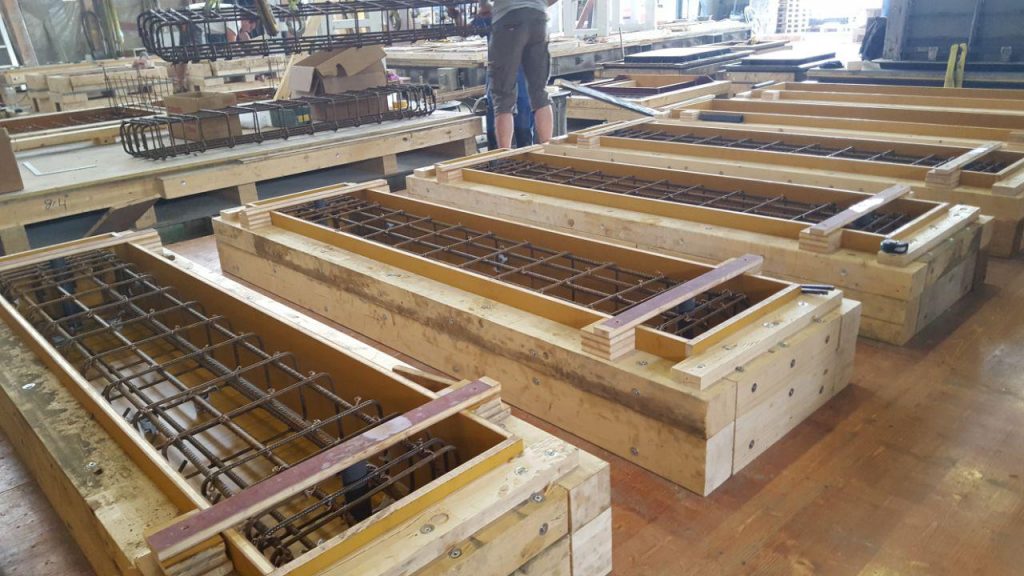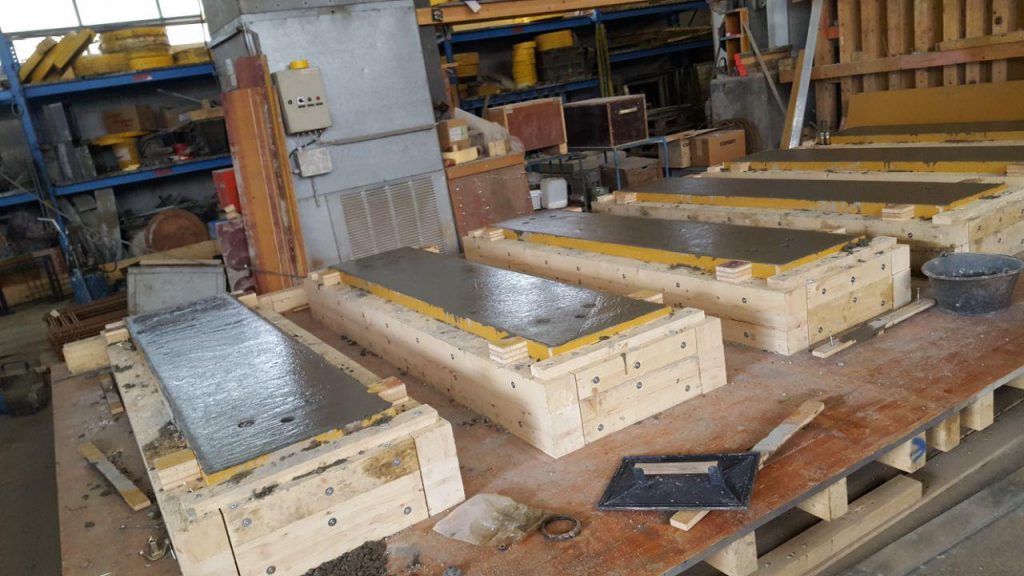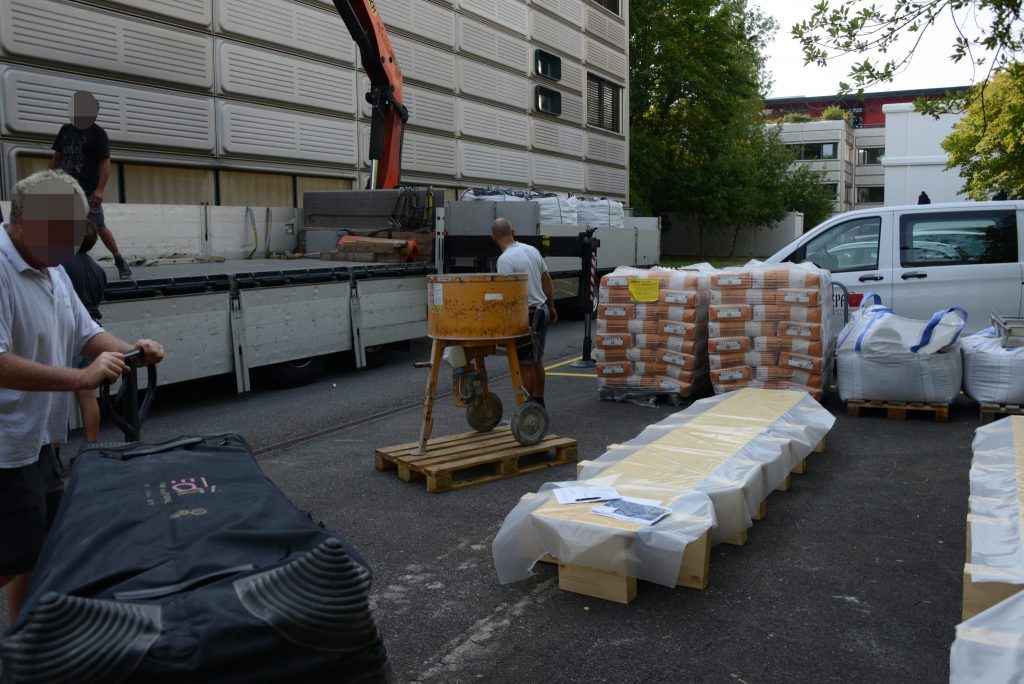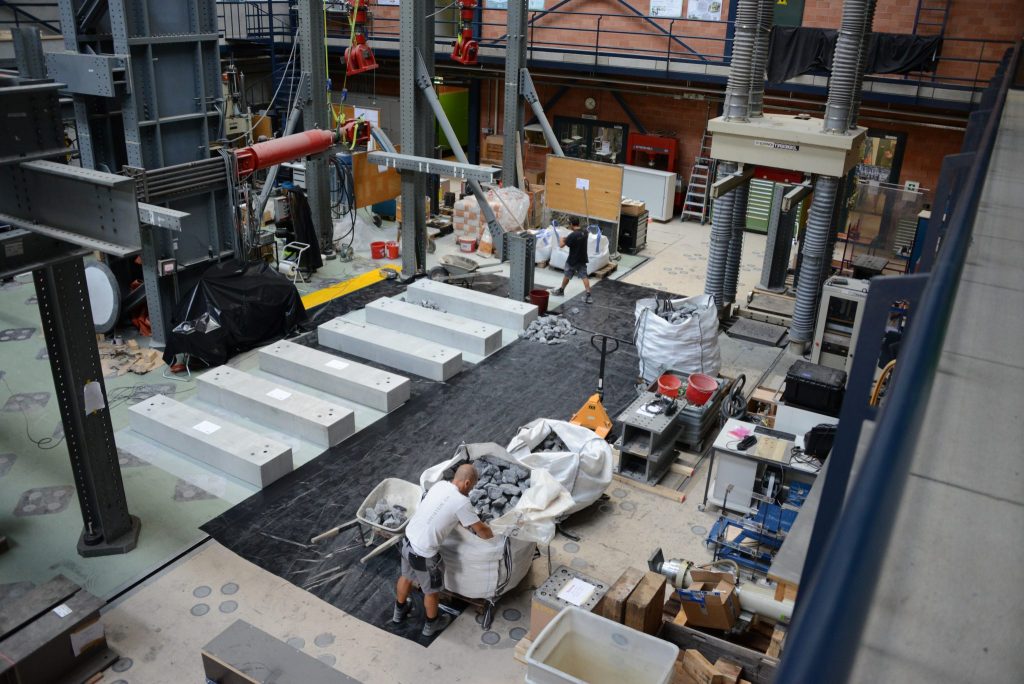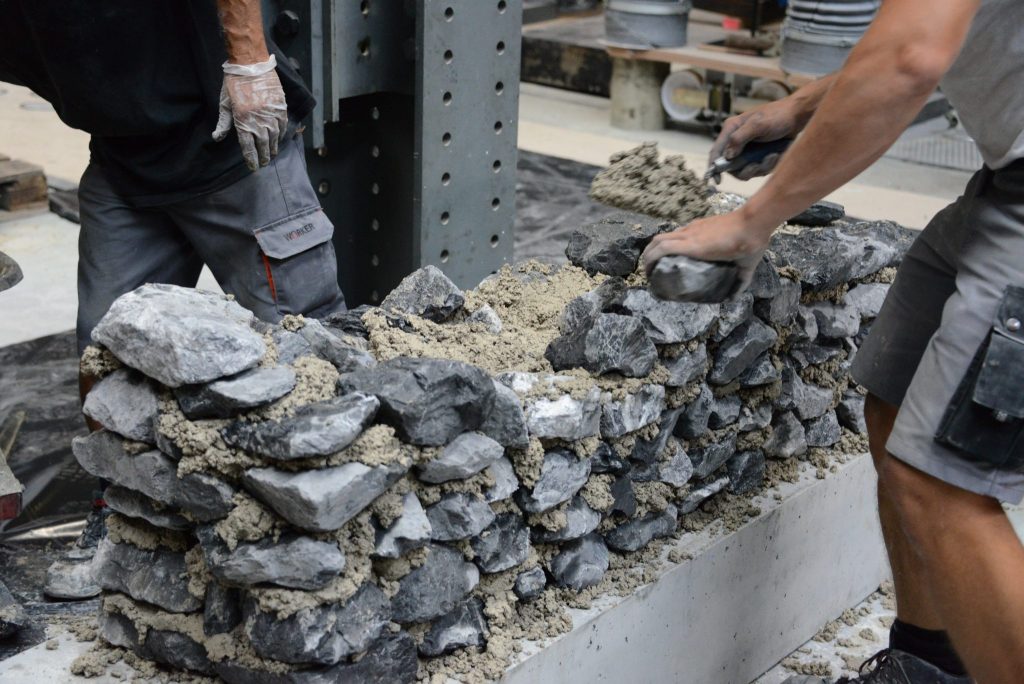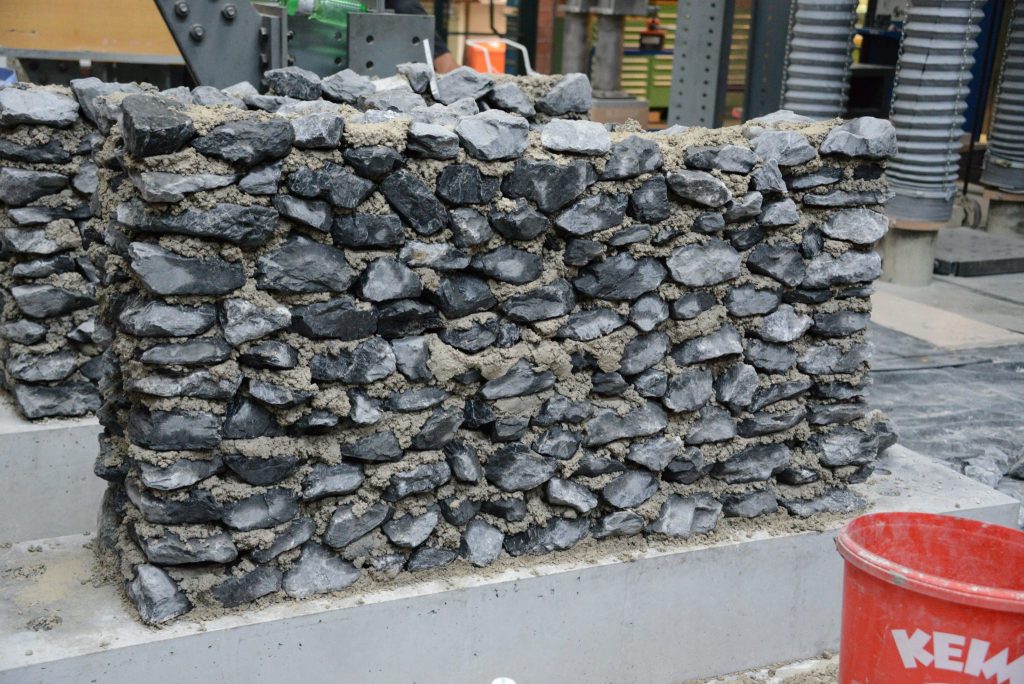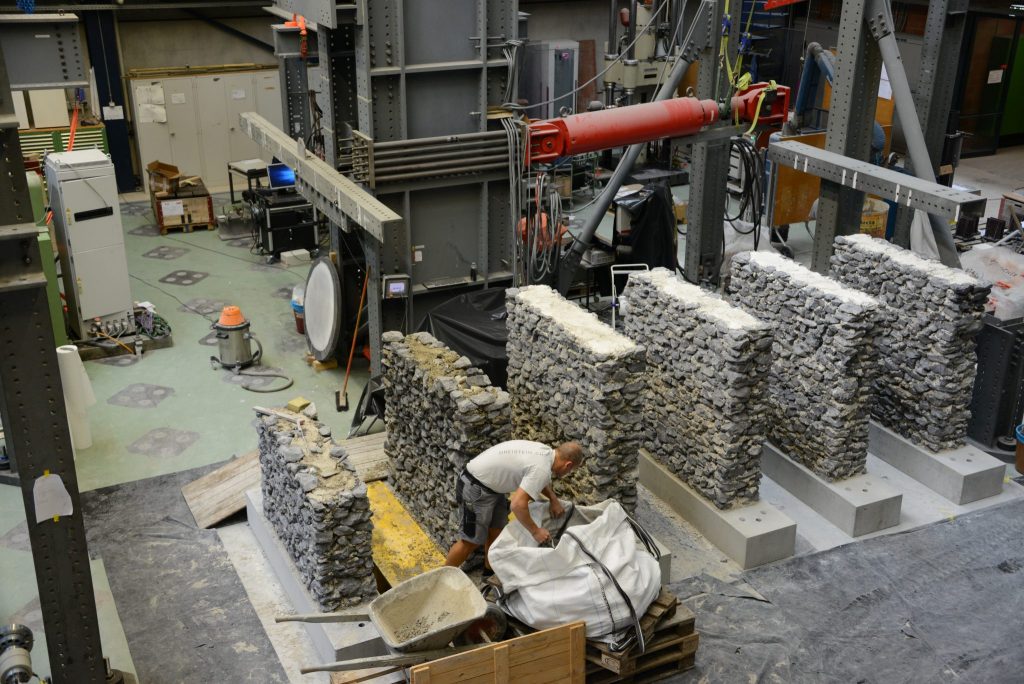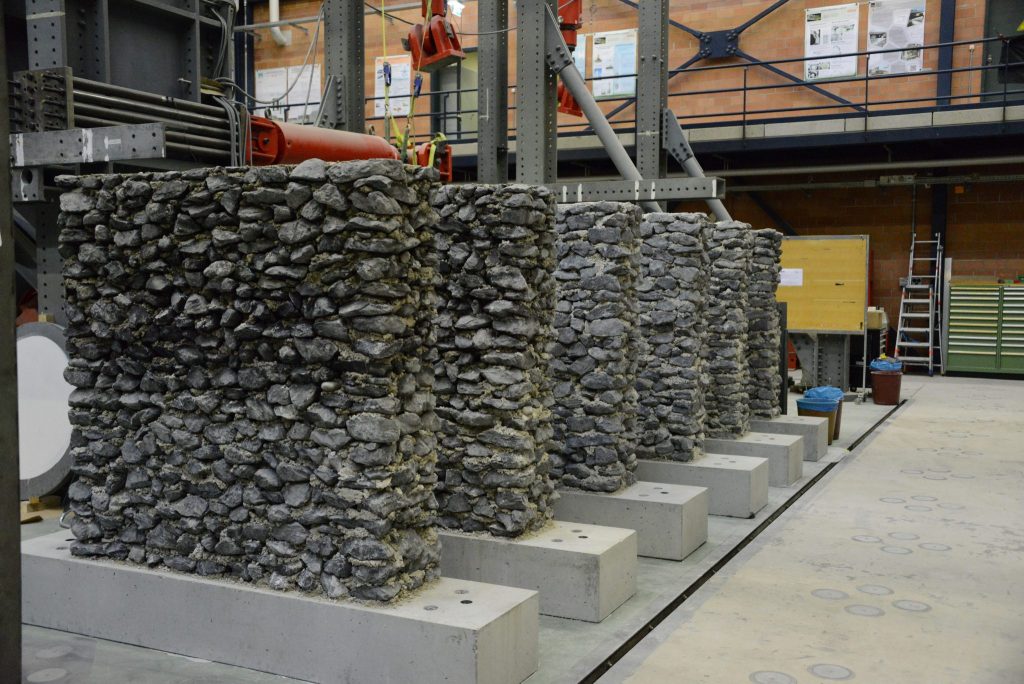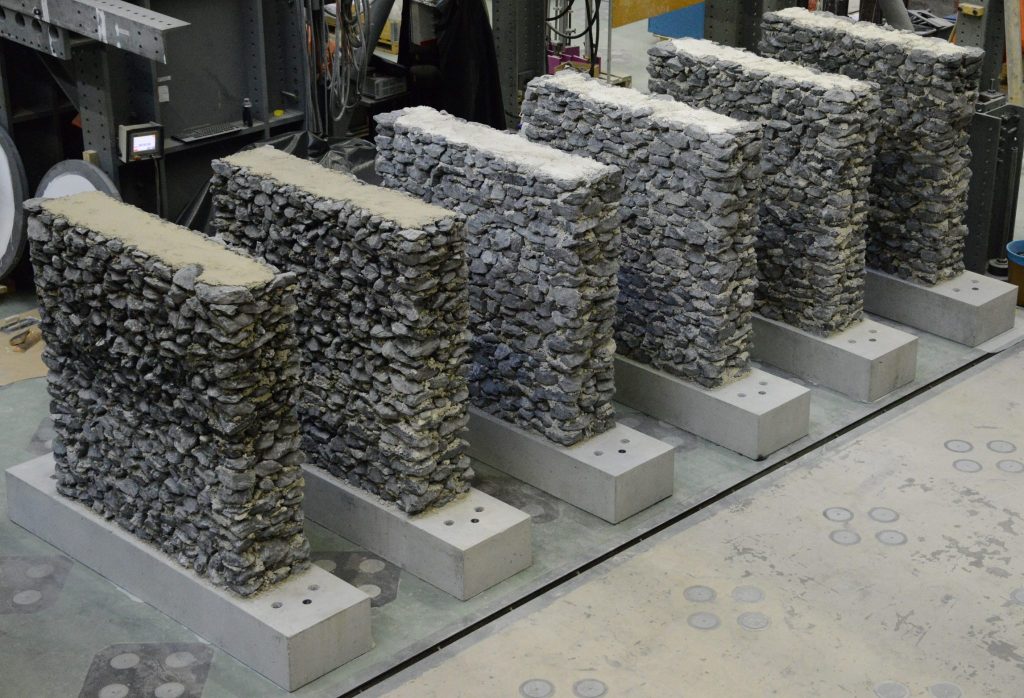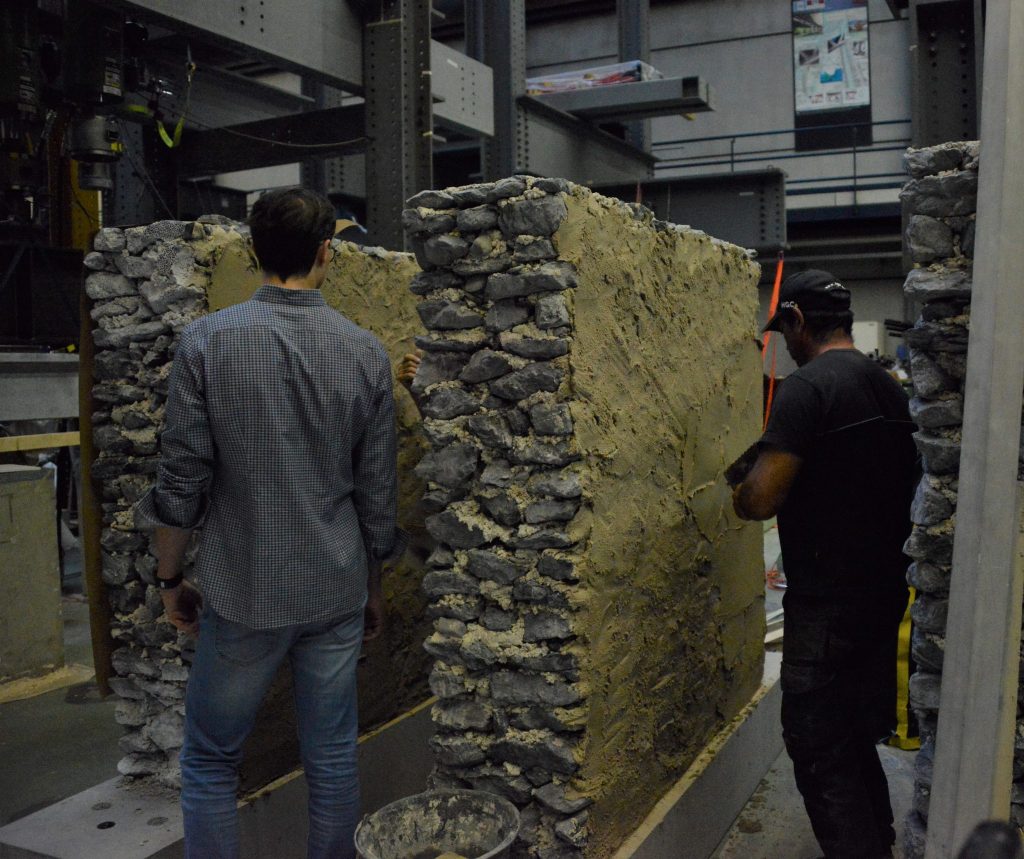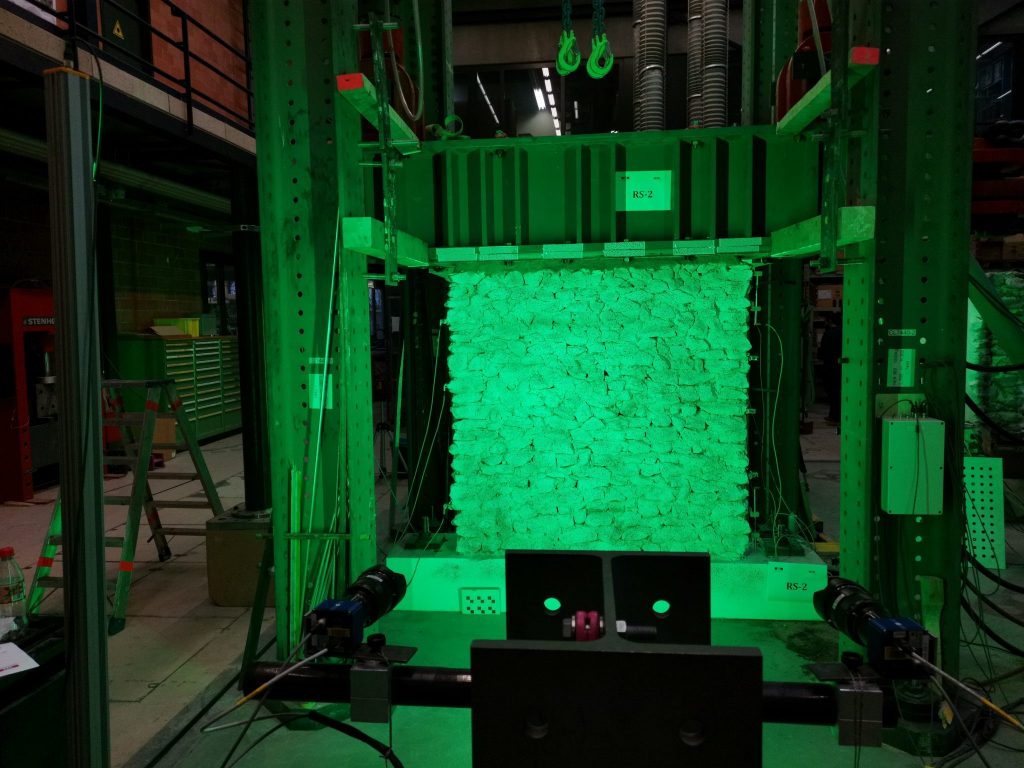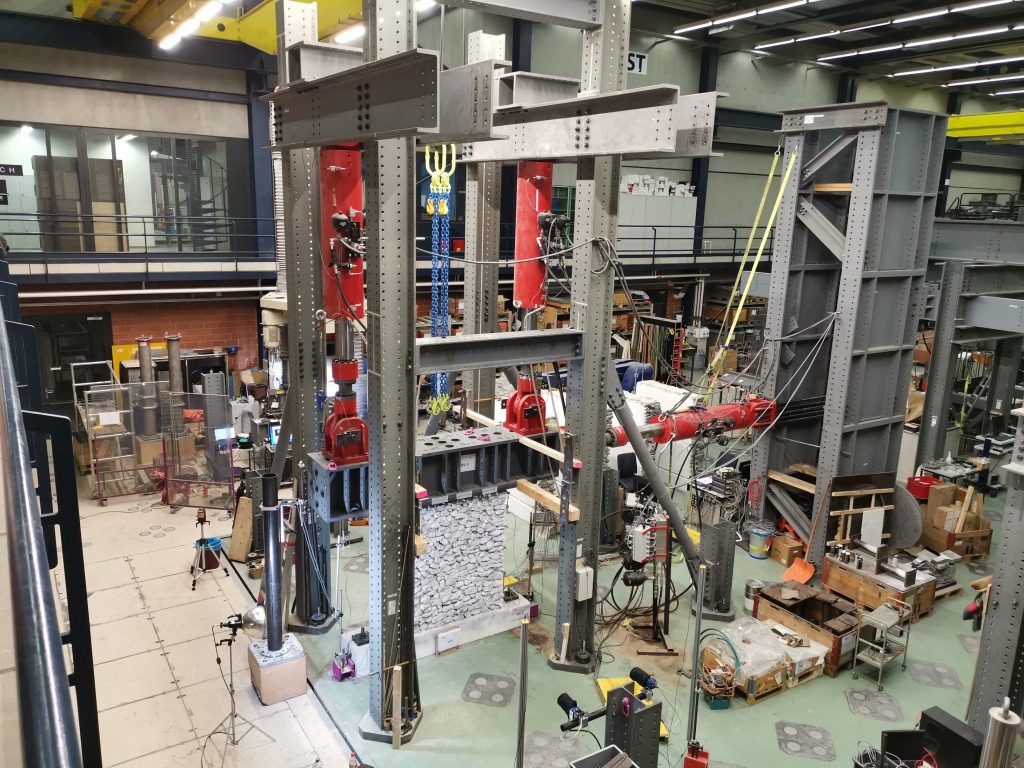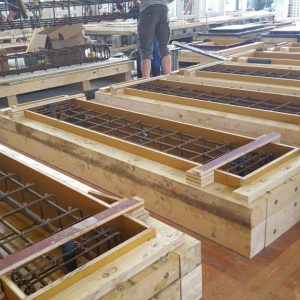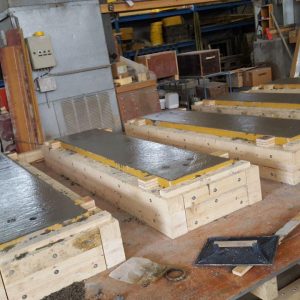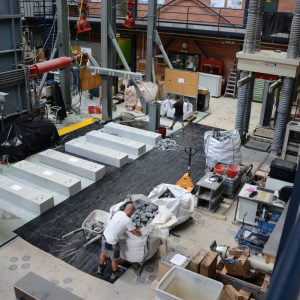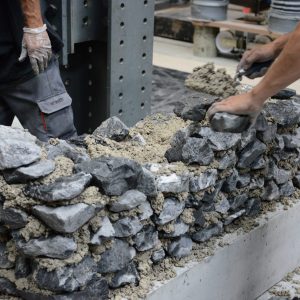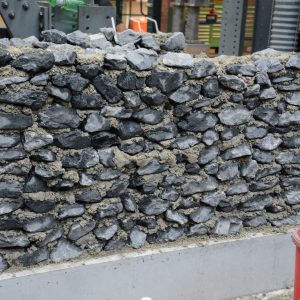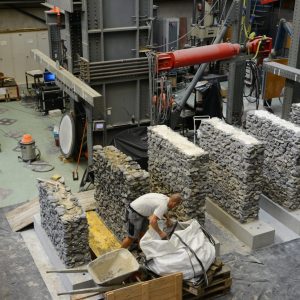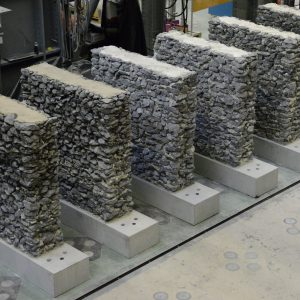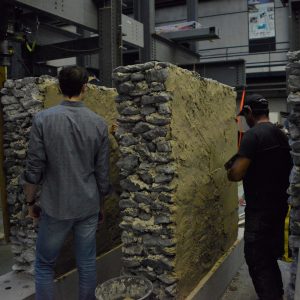Stone-masonry works are among the most vulnerable structures to earthquakes. In addition to vertical loads, horizontal actions induced by earthquakes, which cause the in-plane and out-of-plane deformation of masonry, must be carried by load-bearing walls. One of the important parameters describing the cyclic performance of a wall is the drift capacity, usually defined as the relative horizontal displacement between the top and bottom of a wall divided by the height of the wall.
This study’s primary aim is to obtain experimental data on the cyclic performance of rubble stone-masonry walls, which contributes to the available database, and to assess the extent to which the proposed drift models predict reasonably well the unseen data. To do so, quasi-static cyclic shear-compression tests are performed on six large-scale walls with the dimension of height = 1600 mm, length = 1600 mm, and thickness = 400 mm. In this campaign, the Digital Image Correlation method (DIC) is utilized to obtain the in-plane and out-of-plane deformations of both sides of the walls by placing two sets of stereo-camera systems on either side of the walls to take gray-scale images from the speckled wall surfaces at some specified time interval.
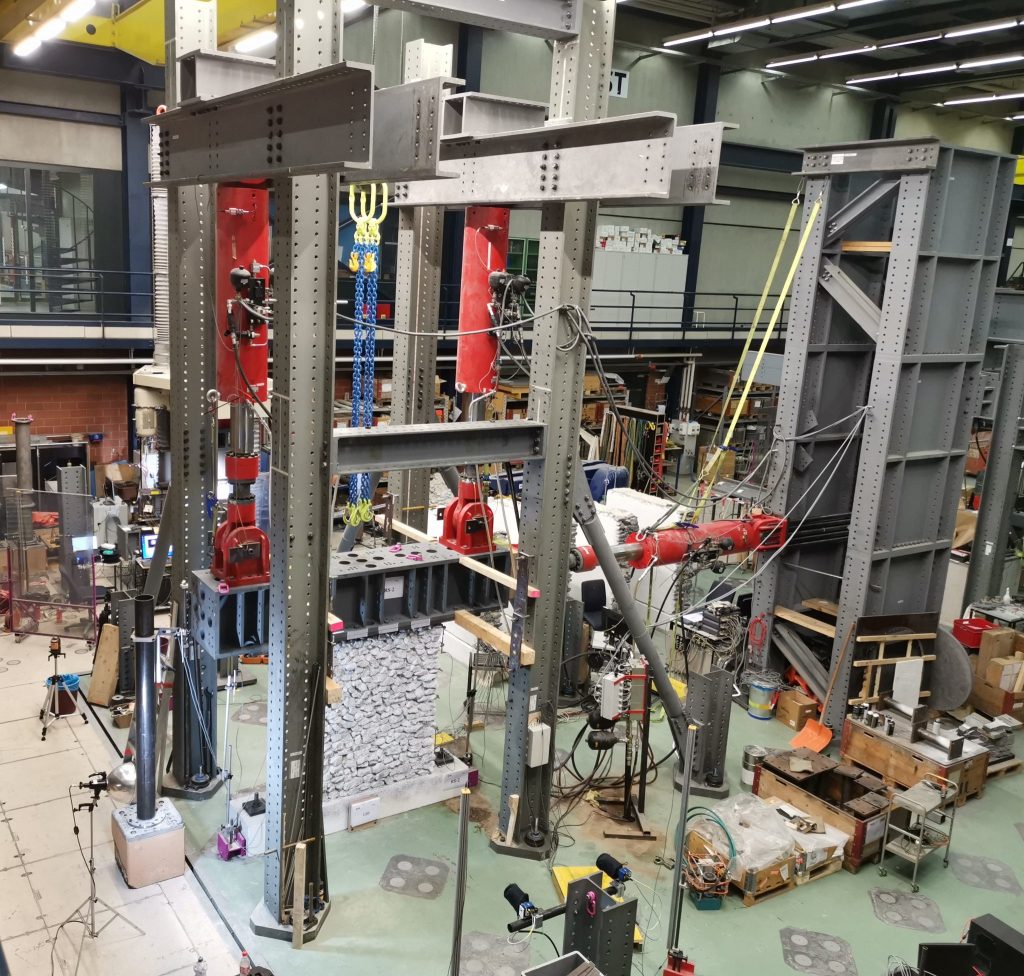
- Article:
- Experimental investigation of strength, stiffness and drift capacity of rubble stone masonry walls [journal link]
- Investigating the cracking of plastered stone masonry walls under shear–compression loading [journal link]
- Comparison of crack segmentation using digital image correlation measurements and deep learning [journal link]
- Machine-learning for damage assessment of rubble stone masonry piers based on crack patterns [journal link]
- Dataset: [dataset link]
- Funding: This work was funded by the Swiss National Science Foundation.
From construction to testing
